Related Research Articles
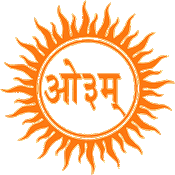
Arya Samaj is a monotheistic Indian Hindu reform movement that promotes values and practices based on the belief in the infallible authority of the Vedas. The sannyasi (ascetic) Dayananda Saraswati founded the samaj in the 1870s.
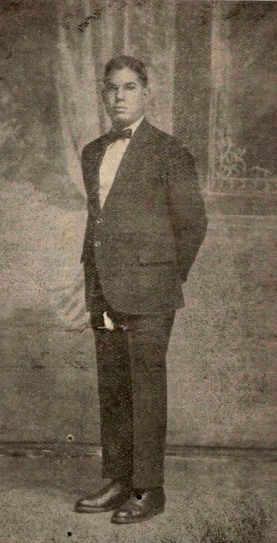
Pt. Vishnu Deo OBE was the first Fiji born and bred leader of the Indo-Fijians. From his initial election to the Legislative Council in 1929 to his retirement in 1959, he remained the most powerful Indo-Fijians political leader in Fiji. He was a staunch supporter of Arya Samaj in Fiji and also the editor of the first successful Hindi-language newspaper to be published in Fiji.
Parmanand Singh was one of the three Indo-Fijians elected to the Legislative Council of Fiji in October 1929 when Indo-Fijians were given the first opportunity to elect their own representatives. The other two were Vishnu Deo and James Ramchandar Rao. Singh was a landlord from Ba and undertook several business ventures which included publishing newspapers.

The Arya Samaj was the first religious, cultural and educational Fiji Indian organisation established in Fiji. From its inception, in 1904, it attracted the young, educated and progressive Hindus into its fold. During the first three decades of the twentieth century, it was the sole voice of the Indian community in Fiji and as Fiji Indians won political rights, it was not surprising that first Indian members of the Legislative Council were all Arya Samajis. The influence of Arya Samaj over the Indians in Fiji gradually waned as other organisations representing Indians were established but it remained the dominant force in politics until 1959. The modern day Arya Samaj in Fiji still speaks out on issues affecting its members and its activities are visible through the numerous educational institutions that it manages.

Pandit Ami Chandra Vidyalankar was an Indo-Fijian educator, preacher, labour leader, politician and football administrator. He served as a member of the Legislative Council between 1947 and 1953.
Fiji Samachar was a Hindi language newspaper published in Fiji from 1924 to 1974. It was published in Suva by the Indian Printing and Publishing Company and its first editor was Babu Ram Singh.
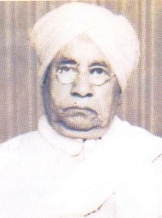
Thakur Kundan Pal Singh Kush (1881–1967) was an Arya Samaj missionary and teacher who arrived in Fiji, from Muzaffarnagar, Uttar Pradesh, India in 1928. He first taught at the Dharamshala School in Nausori where he later became the founding Head Teacher of Vunimono Arya School in 1929. He taught in a number of Arya Samaj schools which included Gurukul Primary School near Lautoka in 1939, Arya Samaj Girls' School in Saweni, Lautoka, from 1940 to 1945, Swami Shraddanand Memorial School in Suva, Vunikavikaloa Arya School in Ra, and Veisari Primary School near Suva.
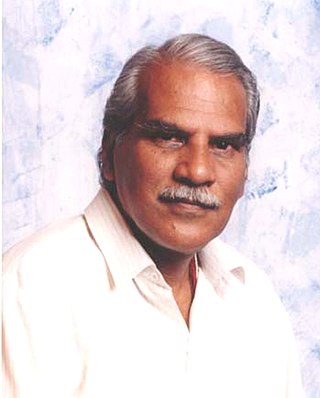
Vivekanad Sharma was a Fiji Indian politician and religious worker but is best known for his promotion of the Hindi language in Fiji and abroad.

Suriname has possibly the highest proportion of Hindus who are Arya Samajis, compared to any other country. In Suriname, the Hindu population had split, with roughly 20% following the teachings of Swami Dayanand Saraswati, founder of the Ārya Samāj, and 80% following the Sanatan Dharm. According to the census of 2012 the number of Ārya Samājĩs is 16,661. The arrival of Arya Samaj preachers in Suriname, in 1929, caused a rift in the Hindu community, between the followers of Sanātanī and the Ārya Samāj.

Arya Samaj is a Hindu reform movement in South Africa. Like other parts of the world where people of Indian origin are settled, the teachings of Swami Dayananda Saraswati, founder of the Arya Samaj, made their way to South Africa during the beginning of the twentieth century. The Arya Samaj encouraged Indian South Africans to take pride in their heritage and culture and promoted education and social reform.
Hindu Maha Sabha was an organisation representing various Hindu organisations and was formed in Fiji in 1926, following the formation of All-India Hindu Maha Sabha in India. The formation of the organisation both in India and Fiji occurred after the assassination of Swami Shraddhanand, a Hindu activist in India. The formation of the Sabha in Fiji coincided with the formation of a national Muslim organisation, the Fiji Muslim League.
Gurkul Primary School was the first substantive school for Fiji Indians established in Fiji in 1918. Its establishment, coincided with the formation of the Arya Pratinidhi Sabha of Fiji, the Arya Samaj organisation that manages the school. The school is located at Saweni near Lautoka in the western side of the island of Viti Levu.
This is a synopsis of organisations formed by Indians in Fiji. When they became free from the bondage of indenture and were able to organise themselves, they founded numerous organizations to seek social and political justice. These organisations promoted the teaching of Indian languages and religious practices and also to help others in time of need. Some of the successful organisations are listed below in the order in which they were established. Some, such as the National Federation Party, are no longer exclusively Indian, but are still predominantly so.

Arya Samaj in Tanzania had been in existence since the early 1900s and prior to independence the whole of East Africa was served by a single Arya Samaj. After independence a separate Pratinidhi Sabha was formed in Tanzania on 19 July 1974.
Arya Samaj has existed in Singapore since 1927 and runs Hindi classes at its premises through the Dayanand Anglo-Vedic Schools System.

Arya Samaj is a Hindu reform movement in Mauritius. Established in 1911, the Arya Paropkarini Sabha was officially registered in 1913. Since its creation Arya Samaj has had a great influence on the religious, social, educational and political lives of the people of Indian origin on the island. It has endeavoured to uphold the principles and ideals set forth by Maharishi Dayanand and his reformist movement. Some of the more notable ideals are women parity and free access to education. It has provided Hindus with a choice of progressive Hinduism, has promoted education with particular emphasis on Hindi and established orphanages, primary schools, colleges and tertiary institution.

The availability of Satyarth Prakash, inspired some people of Indian origin in Bangkok to follow the teachings of Swami Dayanand Saraswati and form the Vedic Dharam Pracharni Sabha on 5 May 1920. Weekly gatherings were held for the propagation of Vedic religion. Land was purchased and a Vedic mandir (temple) constructed. A library was also established. In 1922 the name of the Sabha (organisation) was changed to Arya Samaj and in 1923 it was affiliated with the Arya Pratinidhi Sabha of Uttar Pradesh in India. Although a small organisation, the Sabha has raised funds for relief fund for natural disasters in India. It also organises the celebration of Hindu festivals.

The earliest efforts to establish the Arya Samaj in Trinidad and Tobago were made by visiting missionaries in the beginning of the 20th century. In the 1930s their activities led to the establishment of a new organisation, which first was called the Arya Samaj Association, but later was renamed Arya Pratinidhi Sabha of Trinidad. The main activity of the sabha was giving support to the construction of Aryan temples and schools. The organisation was frequently plagued by split-offs, which caused a decrease of its membership.
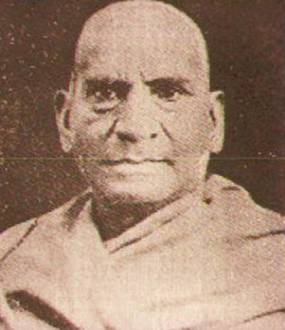
Shraddhanand, born Munshi Ram, was an Indian independence activist and Arya Samaj sannyasi who propagated the teachings of Dayananda Saraswati. This included the establishment of educational institutions, like the Gurukul Kangri University, and played a key role on the Sangathan and the Shuddhi (purification), a Hindu reform movement in the 1920s.

The Singh Sabhā Movement, also known as the Singh Sabhā Lehar, was a Sikh movement that began in Punjab in the 1870s in reaction to the proselytising activities of Christians, Hindu reform movements and Muslims. The movement was founded in an era when the Sikh Empire had been dissolved and annexed by the British, the Khalsa had lost its prestige, and mainstream Sikhs were rapidly converting to other religions. The movement's aims were to "propagate the true Sikh religion and restore Sikhism to its pristine glory; to write and distribute historical and religious books of Sikhs; and to propagate Gurmukhi Punjabi through magazines and media." The movement sought to reform Sikhism and bring back into the Sikh fold the apostates who had converted to other religions; as well as to interest the influential British officials in furthering the Sikh community. At the time of its founding, the Singh Sabha policy was to avoid criticism of other religions and political matters.